The meeting focused on the European Commission´s proposal for the new Multiannual Financial Framework 2021-2027, in particular the ESF+ and ERDF Regulations, in order to reflect and discuss on how to build on the new opportunities created by the financial instruments to advance Roma inclusion.
Welcome and opening remarks
Hanna Liski-Wallentowitz, Ministry of Economic Affairs and Employment, and Henna Huttu, National Roma Contact Point, welcomed participants and shared with them some initial ideas on the Finnish context and the situation of the 10,000 Roma living in Finland and explained that in spite of considerable progress made in achieving good housing conditions and education levels for Roma, discrimination, as well as hate motivated harassment and physical violence motivated by antigypsyism, remain a matter of concern in Finland and tackling discrimination in the recruitment processes a priority.
Relevant EU Developments
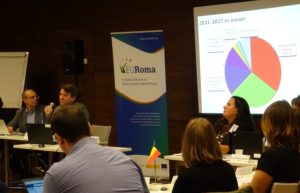 As in previous meetings, a session was devoted to reviewing relevant EU developments in connection with ESI Funds and Roma inclusion.
As in previous meetings, a session was devoted to reviewing relevant EU developments in connection with ESI Funds and Roma inclusion.
Dominique Bé, from the European Commission (DG Employment, Social Affairs and Inclusion), discussed the European Commission’s proposals for the next long-term EU budget as well as the proposals for Regulation on the European Social Fund Plus (ESF+) and ERDF. Main highlights:
- The new ESF+ will have an overall budget of €101.2 billion and will bring together various elements: ESF, YEI and FEAD, EaSI and the Health programme.
- At least 25 % of national ESF+ resources will be earmarked for promoting social inclusion and tackling poverty.
- Co-financing percentages are lowered (less developed=70%, in transition= 55% and more developed 40%).
- “Ex ante conditionalities” are replaced by “enabling conditions”. These are fewer, more focussed on the goals of the fund concerned. They will be monitored and must be applied throughout the programming period (i.e. if not fulfilled this is a reason to stop committing further money in that region / country).
- The link with the European Semester will be strengthened and country specific recommendations (CSR) that will be taken into account at the beginning of the programming period and at the mid-term review.
- The ESF+ shall support among others the specific objective of promoting socio-economic integration of marginalised communities such as the Roma (the mention to Roma is explicit but not exclusive).
- The ERDF Regulation does not include an explicit mention to Roma, only to marginalised communities.
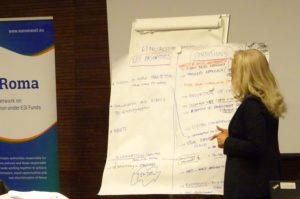
Building on the opportunities created by the new EU Budget for Roma inclusion
Some of the conclusions from the working groups focused on (education) the importance of early childhood education and preventing early school leaving, combating school segregation and enhancing teacher´s intercultural competences, (employment) tackling discrimination, using a mixed approach (Roma/ structures/society), offering a wide range of options to Roma, the importance of digital competences, (social exclusion) eradicating settlements using a combination of ESF – ERDF, the need to adopt a territorial approach and use an integrated approach.
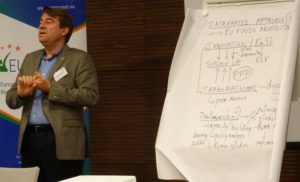 Conditions the new Regulations must meet so that future funds have an impact on the lives of Roma
Conditions the new Regulations must meet so that future funds have an impact on the lives of Roma
Discrimination was identified as a key issue where ESF+ should invest. The importance of using an integrated approach or making sure that innovation/ EaSI: leads to the scaling up of projects was also highlighted. The importance of having long-term programmes and avoiding having calls for proposals every year was also stressed along with the need to improve public procurement systems. As regards the evaluation system and indicators the focus on qualitative indicators was seen as a very positive step but the partners regreted that there were only employment indicators and that social inclusion indicators were missing. The partners also called for greater flexibility in co-funding and eligibility of actions and for a reduction of the administrative burden.
Looking at the Finnish context
The second day of the meeting was devoted to analysing the Finnish context as regards Roma policies and ESI Funds aimed at promoting social inclusion, equal opportunities and non-discrimination of the Roma population building upon the presentations made by Finnish Network partners.
Henna Huttu (Advisory Board of Roma Affairs) set the context by presenting the situation of Roma population in Finland and the implementation of the Finnish NRIS.Sirpa Liljeström (Ministry of Economic Affairs and Employment) shared information with participants on the way ESI Funds are spent in Finland and the projects within ESF that are mainly targeted at Roma.
Following the presentation of the general context, a number of initiatives, funded by ESI Funds and other funding sources, were presented. These presentations aimed to contribute to the exchange of experiences among partners and to identify relevant elements for the sucess of interventions targeting Roma.
- Activities and projects of the Helsinki Deacones Institute to support mobile EU-Roma with their daily basic needs and employment opportunities
- “Work and Hope”, a small ESF-funded project (2018-2019) to helps immigrant Roma in a vulnerable position to improve their professional skills and find jobs (mainly cleaning but also in gardening).
- Roma Health and welfare- survey – funded by the ESF (2016 – 2019) with the aim of collecting data on the health and wellbeing of Roma people living in the country in order to develop better public health and welfare services that carter for the needs of this community.
- Happiness for Work project and For life project –ESFprojects that offer advice to Roma people in order to help them find their call, gain relevant qualifications and enter the labour market or become entrepreneurs.
- Exploring the possibility of creating a specialized centre for developing social care and health services of the Roma) – This research study is exploring the possibility of creating a research and development centre for Roma, the aim is to create people-centred, community-based and civil society-powered services, supported by ICT, digital service models and co-creation processes.
Closing the meeting, Susanna Rajala, Counsellor of Education at the Finnish National Agency for Education, adressed the audience to present how the Finnish education system has managed to dramatically reduce drop out rates amongst Roma, showing that a strong and inclusive education system coupled with some positive discrimination measures are key to the academic sucess of Roma pupils.
PHOTO GALLERY
-
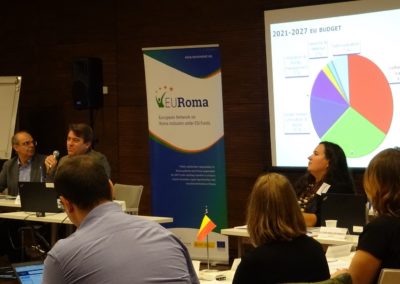
New EU Budget _EC Proposal
-
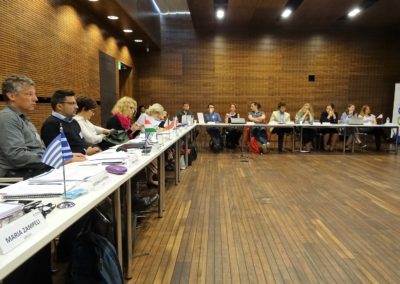
Plenary
-
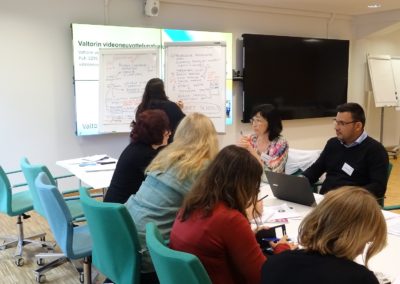
Workshop on Education
-
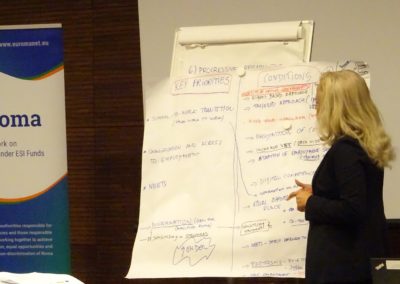
Conclusions from Workshop on Employment
-
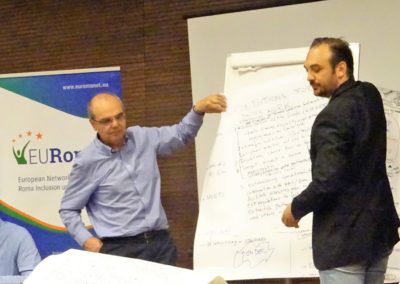
Conclusions workshop on Social Inclusion
-
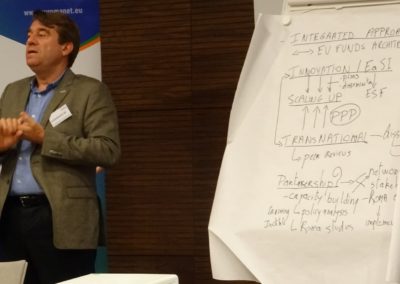
Conclusions from workshop on Conditions for Quality Implementations
-
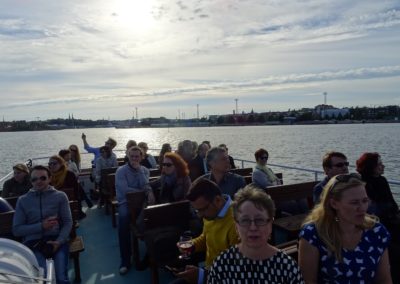
Evening Social programme
-
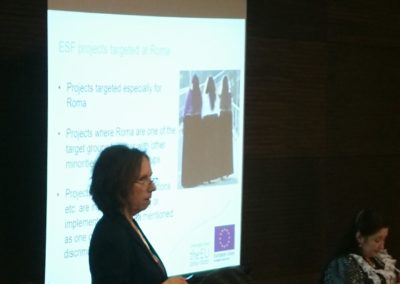
Use of ESIF for Roma Inclusion _Ministry of Economic Affairs and Employment
-
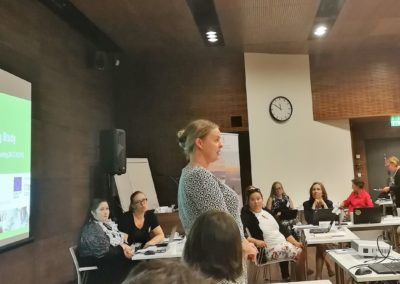
Roma Health and Welfare Survey_National Institute of Health
-
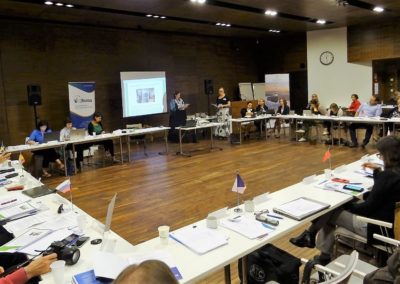
Happiness from work_Roma mediator Kajaani City Roma
-
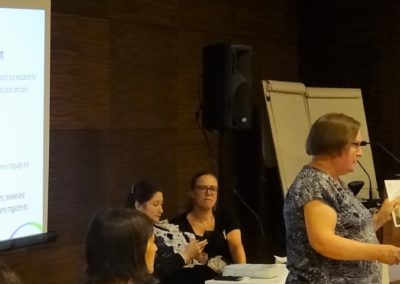
The Finnish Educational System and Roma Pupils_Finnish National Agency for Education

